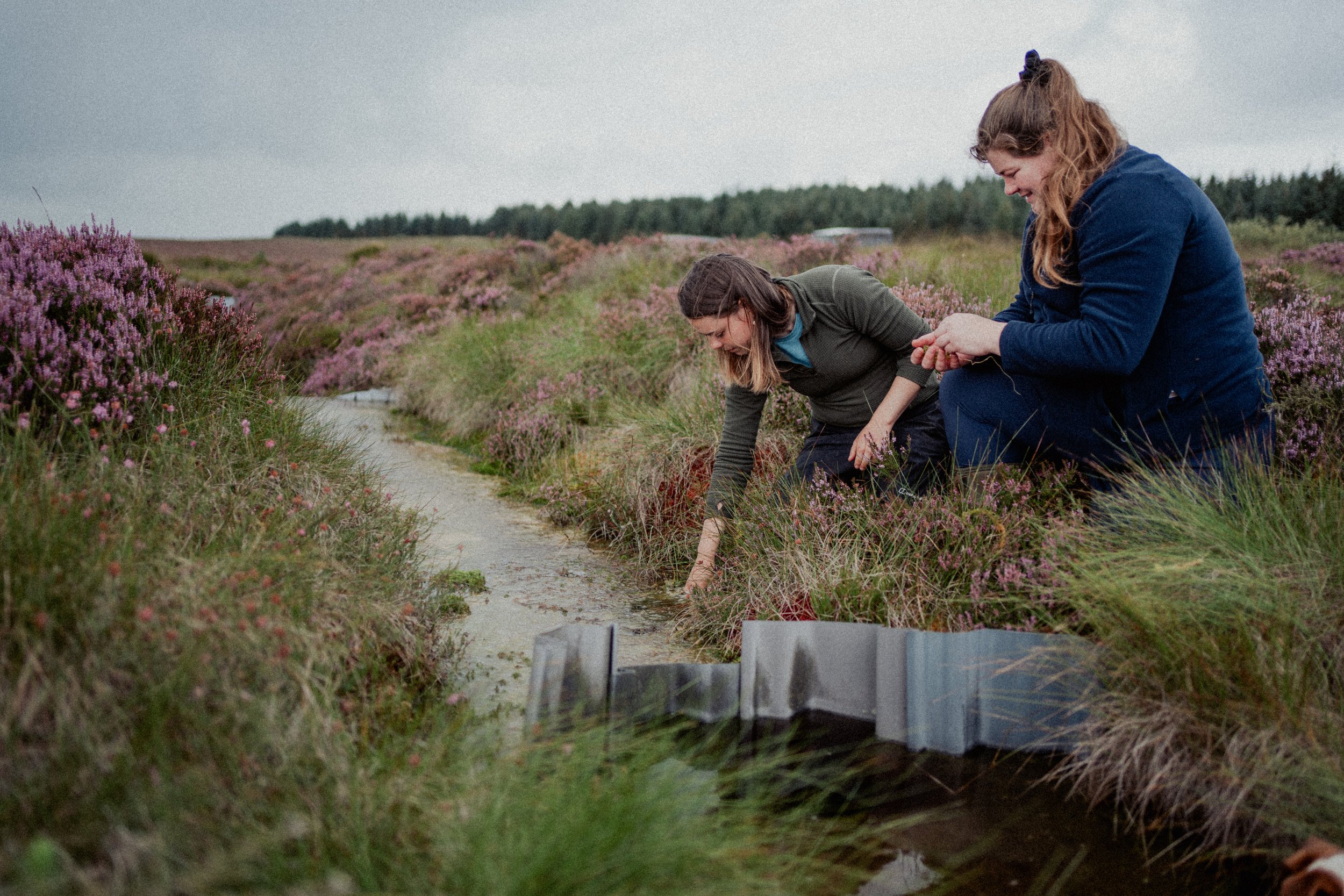Restoring Northumberland’s Bogs
We are crouched beside a peat hag in the Border Mires, inspecting the layers of the past that form this unique terrain. We are accompanied by Rowan and Flora, research and survey officers for the Northumberland Peat Partnership, an initiative set up in conjunction with the Northumberland Wildlife Trust to promote the positive management and restoration of Northumberland’s peatland habitats. The exposed wall of peat is a result of water flow erosion caused by an expansive network of man-made channels running off the tops around Bell Crag Flow, snaking like eels across the wild landscape. For much of human history, peat bogs have been thought of as wastelands, and this 99-hectare site was hacked away in order to construct a railway to assist with commercial peat extraction on the mire. Thankfully, it is only one of a few sites in the Border Mires to have suffered from peat extraction, but many of Northumberland’s other peat bogs have instead been systematically drained since the 1800s to make space for fertile farmland below.
Bogs scar easily and the ditches made on Bell Crag Flow more than 100 years ago are still visible. This should all be a wet bog in its natural state: a gurgling morass of deep pools and sponge-like vegetation. Instead, in some areas, the erosion is so severe that great troughs have been cleaved through the dry peat. Big chunks of black earth, recently fallen away from the edges of the hag, lie beside our feet. Exposed to the elements, the peat will decompose and release the carbon it has been storing for thousands of years back into the atmosphere.
In the battle to save Britain’s peat bogs, this is the frontline. “In the absence of the naturally high water table, the saturated peat is exposed to erosion in all extreme weather conditions,” explains Rowan. “When it freezes, parts of it fall off. If the wind blows strongly, you lose peat off the surfaces. If it rains really heavily, there is water erosion, and if you get a drought, then it crumbles and is lost as dust.” Previous restoration efforts are visible at this site. Within the channels, plastic piling damns installed in the 1970s are helping to restore the natural drainage patterns and are encouraging the colonisation of sphagnum moss and other specialist plant species. Where it is working, the water table is high and the bog is colourful and fresh, wobbly underfoot and possesses an earthy smell. Look closer and you can see that within the ancient watery land is a thriving ecosystem rich in wildlife including rare lizards, dragonflies and even snakes.
The Northumberland Peat Partnership, an alliance between multiple organisations which focuses on promoting peatland restoration stretching from the A69 up to the Scottish border. The work of the partnership involves undertaking detailed field surveys and desk-based mapping of Northumberland’s peatland resource, which assists in developing a wider understanding of Northumberland’s peatland condition and in turn will inform plans for future restoration of its bogs. From the A69 to the Scottish border, the Northumberland Peat Partnership’s area encompasses a staggering 142,726 hectares of peatland. The small team works year-round, in all weathers, across the county’s most challenging environments to develop a wider understanding of the peatland condition which will in turn inform plans for future restoration. “It’s gruelling work at times,” says Rowan, as she describes some of the conditions they encountered on top of Cheviot last winter. “But even on the coldest and wettest days, we manage to have a lot of fun and stay smiling throughout!”









